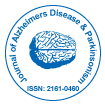Nosso grupo organiza mais de 3.000 Séries de conferências Eventos todos os anos nos EUA, Europa e outros países. Ásia com o apoio de mais 1.000 Sociedades e publica mais de 700 Acesso aberto Periódicos que contém mais de 50.000 personalidades eminentes, cientistas de renome como membros do conselho editorial.
Periódicos de acesso aberto ganhando mais leitores e citações
700 periódicos e 15 milhões de leitores Cada periódico está obtendo mais de 25.000 leitores
Indexado em
- Índice Copérnico
- Google Scholar
- Sherpa Romeu
- Abra o portão J
- Genâmica JournalSeek
- Chaves Acadêmicas
- JornalTOCs
- Infraestrutura Nacional de Conhecimento da China (CNKI)
- Biblioteca de Periódicos Eletrônicos
- RefSeek
- Universidade Hamdard
- EBSCO AZ
- OCLC – WorldCat
- Catálogo online SWB
- Biblioteca Virtual de Biologia (vifabio)
- Publons
- Fundação de Genebra para Educação e Pesquisa Médica
- Euro Pub
- ICMJE
Links Úteis
Diários de acesso aberto
Compartilhe esta página
Abstrato
Possible Prevention of Alzheimer?s Disease by Aldehyde Dehydrogenase: A Perspective Review
Tetsumori Yamashima
Investigating the mechanism of neuronal death in Alzheimer’s disease is difficult, because only a tiny percentage of neurons are degenerating at any time point during the long prodromal period. Epidemiological, genetic, biochemical and animal model studies have attributed excessive aldehyde load as a cause of Alzheimer neuronal death. Focusing on toxic aldehydes will help fill gaps in our knowledge that cannot be explained by the amyloid β or tau hypotheses. Hydroxynonenal is formed by peroxidation of membrane lipids and LDL or during deep-frying of vegetable oils. It carbonylates Hsp70.1, a heat shock protein with the dual functions of a chaperone protein and lysosomal stabilizer. Hydroxynonenal-mediated Hsp70.1 carbonylation followed by calpain-mediated cleavage of carbonylated Hsp70.1, causes lysosomal neuronal death (the ‘calpain-cathepsin hypothesis’). Aldehyde dehydrogenase (ALDH) participates in the removal of not only ethanol-derived acetaldehyde, but also linoleic acid-derived hydroxynonenal. This review describes how scavenging hydroxynonenal by ALDH enzymes prevent Alzheimer’s disease.
Diários por Assunto
- Agro e Aquicultura
- Alimentação e Nutrição
- Bioquímica
- Ciência da Computação
- Ciência de materiais
- Ciencias ambientais
- Ciências Clínicas
- Ciências Farmacêuticas
- Ciências gerais
- Ciências Médicas
- Ciências Sociais e Políticas
- Ciências veterinarias
- Economia e Contabilidade
- Enfermagem e cuidados de saúde
- Engenharia
- Engenheiro químico
- Física
- Genética e Biologia Molecular
- Geologia e Ciências da Terra
- Gestão de negócios
- Imunologia e Microbiologia
- Informática
- Matemática
- Química
Revistas clínicas e médicas
- Anestesiologia
- Assistência médica
- Biologia molecular
- Cardiologia
- Cirurgia
- Dermatologia
- Diabetes e Endocrinologia
- Doenças infecciosas
- Enfermagem
- Fisioterapia e Reabilitação
- Gastroenterologia
- Genética
- Hematologia
- Imunologia
- Medicamento
- Medicina Reprodutiva
- Microbiologia
- Nefrologia
- Neurologia
- Odontologia
- Oftalmologia
- Oncologia
- Ortopedia
- Pediatria
- Pesquisa Clinica
- Pneumologia
- Psiquiatria
- Toxicologia

 English
English  Spanish
Spanish  Chinese
Chinese  Russian
Russian  German
German  French
French  Japanese
Japanese  Hindi
Hindi